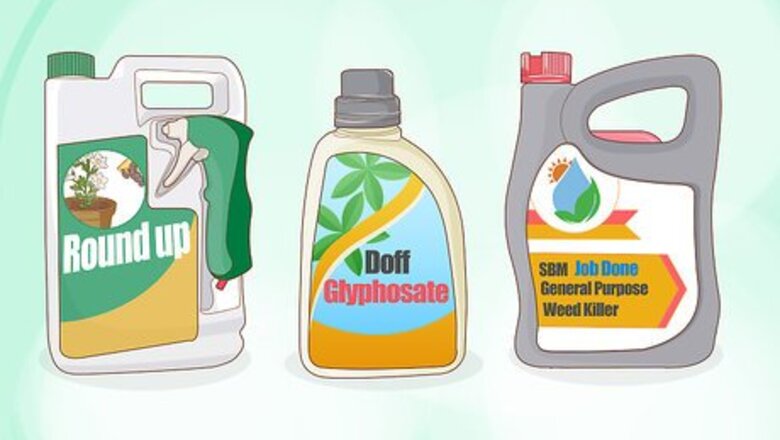
views
Here are 10 effective ways you can get rid of even the most stubborn thistles.
Systemic herbicide
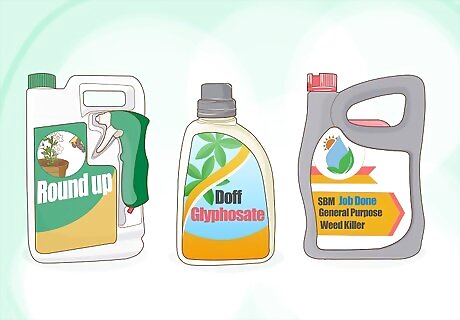
If you don’t mind killing the surrounding plants, this is the way to go. Pick up a systemic weed killer that contains glyphosate, which is the most efficient ingredient at permanently wiping out thistles. Follow the instructions on the label to apply it to your thistles. Do this early in the growing season for the best results. Please note: The WHO considers glyphosate to be a probable human carcinogen. Its use is prohibited in some states and countries. Please check with your local laws and wear gloves, sleeves, a dust mask, and goggles if you apply it. Do not allow any pets or livestock to wander into the area while it’s being treated. You may need to do this multiple times. If the thistles grow back, treat them again. It can take a few seasons to completely remove the weeds. Unfortunately, glyphosate is some pretty strong stuff. This herbicide will kill any plants it comes in contact with, so you may have kill off some innocent bystanders when you go this route. However, if your thistles aren’t located in a garden, it may not matter much to you.
Selective weed killer
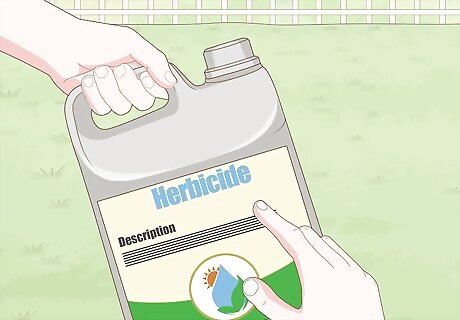
If your thistles are in a curated garden, opt for a selective weed killer. Selective weed killers containing clopyralid or triclopyr will kill thistles without damaging the surrounding plants. Buy a commercially-sold organic herbicide that’s formulated to kill weeds and read the label to make sure it won’t harm positive plants. Then, follow the instructions on the label to mix and apply your herbicide. While the risk to non-weeds will be relatively low, do your best to only treat the thistles with your herbicide. Combining a selective weed killer with competing plants is one of the most efficient combos when it comes to getting rid of thistle. Don’t assume that your weed killer isn’t working if the thistles grow back after you’ve killed the visible plants off with your weed killer. So long as you keep at it, if the seeds can’t spread and the shoots can’t flourish, the roots will slowly die out over time.
Competing plants
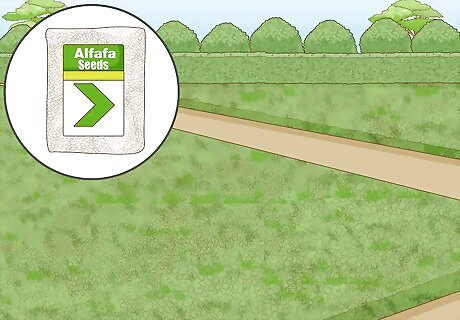
Perennial grass crops like alfalfa will keep thistles from getting nutrients. Growing alfalfa is hands-down the best choice here, since alfalfa starts soaking up nutrients in the soil before thistles even sprout. Growing grasses of any kind in the area around your thistles will have a similar effect, though. Spread your seeds in the soil surrounding your thistles and gently rake the area. Use a roller or cultipacker to compress the soil and seeds together. Water the area thoroughly and continue to water 3-4 times a day. Once your grass grows, cut back on the water and give your grass time to flourish. When it comes to grass species, alta tall fescue is the most effective, while Troy bluegrass is the least effective at competing with thistles. Over years, this may actually completely get rid of your thistle problem, but it is definitely a long-term solution. There’s always the possibility that the thistles continue to thrive, though.
Manual removal
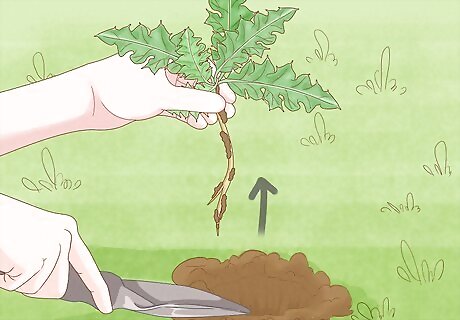
If it’s just an isolated patch of thistles, remove the roots by hand. Throw on some thick gloves to protect your hands. Use shears to remove every stalk you can see and place the bits you remove immediately in a garbage bag to make the root removal more manageable. Use a spade or trowel to dig out the base of the plant and lift every root you find out of the soil before tossing it into the bag. Remove every scrap, shoot, leaf, and root you come across to fully extract the thistles and throw the bag in the trash when you’re done. Clean your tools thoroughly after you’re done using soap and water. If there’s even a single seed sitting on a tool and you use it elsewhere, the thistles may reappear. Thistles have deep root systems, so this can take some effort. It’s key that you remove as much plant material as possible, though. Thistles can regrow out of basically any part of the plant, so you can’t leave any scraps behind.
Mowing
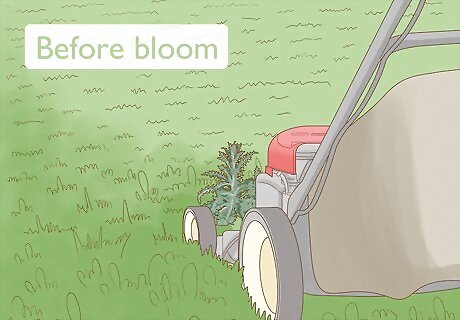
Mowing the thistles before they bloom will curb the issue. Mow the thistles right before the flowering stage, which will make it much harder for the plant to distribute its seeds. Start in the early spring, and continue to mow the area over and over again whenever you notice new growth. If possible, mow the plants whenever you know a heavy rain is coming; wounding the thistles at the base and exposing them to large amounts of water may promote fungi and diseases to develop in the roots. The best time to start this process is after the thistles have grown rapidly and you see the bulbs forming on the stalks, but before the plants have actually flowered. If you start this process at this point, you won’t need to worry about seeds spreading around. It helps to combine this process with a weed killer of some kind. You’re likely going to have to mow multiple times over the course of several growing seasons to fully remove the plants.
Tilling
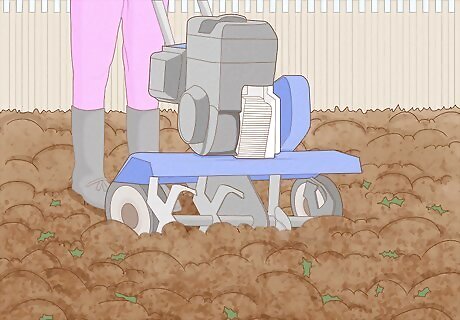
Tilling the soil in the fall will weaken the roots and starve them out. Use a tiller if you have one, or grab a rake or shovel. Wherever your thistles are growing, tear up the soil and lift out any roots that you find. Disrupting the soil like this will damage the existing root systems, which will help kill the plants off before the first frost of the winter. You may need to do this multiple times over the course of the season. Don’t till the soil in the growing season if you can’t pick up every piece of thistle you tear up, since tilling may accidentally spread seeds. If it won’t be hard to pick everything up, feel free to do this during the growing season. It may take multiple attempts, though.
Physical coverage
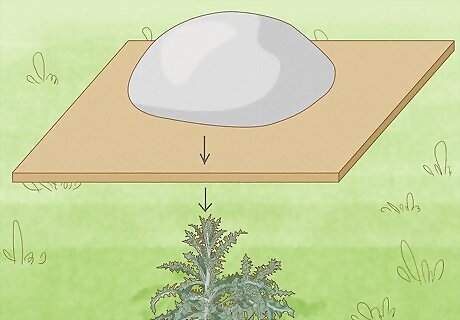
You can always suffocate the thistles with a flat, heavy object. Get a large sheet of plywood or metal and lay it down over the thistles. Weigh it down with something heavy to dig the edges of your object into the soil. This will cut the thistles off from any sun or water, and they should die out over the course of 2-3 months. Once you remove the cover, dig up the roots, lift the dead thistle bits up, and throw them out. The thistles may grow back if the roots didn’t completely die out while you covered the plants, but this is a pretty low-effort option so if this doesn’t work, at least you didn’t spend much time or energy on it! Overlapping layers of cardboard can also work well for this. You can also try solar sterilization, where you place layers of plastic or landscape on top of the weeds. The cover will block the sunlight from the plants and kill them using the heat of the sun.
Livestock
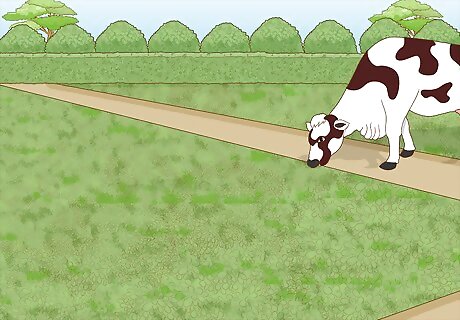
Certain animals, like goats and cattle, will gladly eat thistles. If you happen to run a farm or you manage livestock, there are a few animals who will gladly snack on thistles to keep things under control. Goats are likely the best candidate, so let them graze in the area where you’ve got thistles. Cattle will also occasionally snack on thistle plants, although some cows aren’t quite as fond of the plants as others will be. The livestock won’t totally remove the thistles, but this is a solid way to keep the problem under control while you’re dealing with the issue in other ways. Just don’t let your livestock snack on any thistles you’ve chemically treated. Chickens may snack on thistles, although some poultry farmers claim that they aren’t good for chickens. Unfortunately, there isn’t a ton of research out there on this. Thistle can be toxic to some livestock, although it’s rare that the animals will eat enough of it to cause any harm. Still, just to be safe, make sure that any livestock have other options available so that they aren’t eating a diet consisting of 100% thistle.===Vinegar===
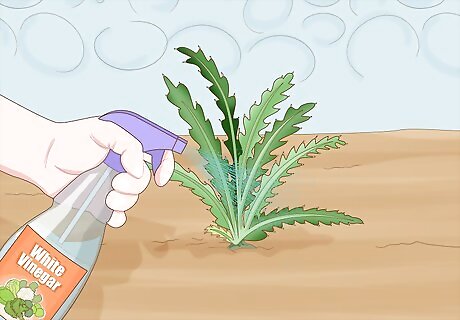
Vinegar is probably the only natural DIY option that will kill thistles. Pour white vinegar into a spray bottle. Then, spritz the vinegar directly onto the thistle plants until the plants are dripping with vinegar. Typically, this means 1 or 2 sprays per plant. Expect the vinegar to take a few days to a week to kill the thistles. Once they’re dead, throw on some gloves, pull up the dead plants, and throw them out in a garbage bag. Your thistles will likely grow back relatively soon. Keep repeating this process until they’re totally gone. The root system should dry out and die after several growing seasons. Thistles are pretty persistent, and standard white vinegar isn’t particularly potent—usually it’s 5% vinegar. If possible, pick up some industrial-strength 20% white vinegar and use that. You may need to reapply the vinegar after it rains.
Insects
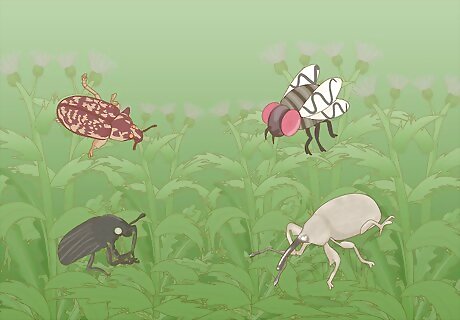
There are a handful of bugs that will snack on thistles and weaken them. While many of the bugs that enjoy thistle aren’t easy to find or attract, you can buy stem-mining weevils, though. Purchase a few hundred stem-mining weevils (Hadroplontus litura) and release them near your thistles. The adult bugs will eat the thistles and plant larvae inside of the stems. Once the larvae hatch, they’ll stick around to continue the cycle so long as there are still thistles in the area. Once the thistles are dead, throw on some gloves, pick up any remaining plant matter, and stuff it in a garbage bag. Throw the thistles out along with the rest of your trash. Urophora cardui, also known as the thistle gall fly, is another option that will feed on thistle plants. Unfortunately, it can be kind of tough to purchase them, though. Unless you’re going for a super organic and natural solution, this may not be the most efficient solution. The bugs will often leave if the larvae hatch and there aren’t enough thistles to snack on, and your thistles may grow back after the bugs have all moved on.



















Comments
0 comment